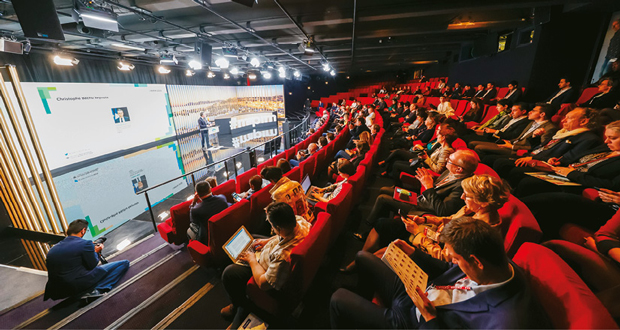The world’s leading real estate event MIPIM 2023 in Cannes attracted 23,000 delegates from 90 countries ranging from real estate executives and trade association representatives to political leaders and suppliers from across the entire value chain. Jo Sutherland reports
This year saw a new format of MIPIM exhibitions, discussions and panel talks which covered three core focuses, each enshrining sustainable values and objectives. The first centred around making the business case for net zero and how to secure the ramp up in funding and financial incentives.
Michelle Condon, Marketing & Communications Director at Hollis, said it was time to get serious about the net zero elephant in the room – decarbonising the current building stock.
“Businesses of all shapes and sizes are committing to becoming ‘net-zero’, but without the buildings we occupy and use being fit for this purpose, it is going to be impossible for anyone to achieve,” she said. “We all have a moral responsibility, but when you take that away there are clear commercial implications for property owners and occupiers.”
For David Leversha, Director and Net Zero lead for Property & Buildings at WSP, the business case for transitioning to a net zero built environment in the UK is being hampered by its regulatory setup, lack of awareness and shortage of retrofitting skills.
He explained: “We need greater regulation regarding embodied carbon. WSP, alongside other firms operating in the built environment, lent its support to Part Z, a proposed amendment to the UK’s Building Regulations mandating the assessment of whole life carbon and setting limits on embodied carbon.
“In addition, there is a need for greater awareness and education around the benefits of a zero-carbon built environment, both for individuals and for the wider community. At present, the UK does not have the workforce it needs to successfully and efficiently retrofit at scale. As such, long-term support is required to stimulate the market, give people and companies the confidence to invest in training and develop their offering and successfully communicate that these initiatives will be worth the effort.”
POLICY MAKING AND THE CIRCULAR ECONOMY
The second core strand of the conference asked questions around how public and private sectors can work together to drive standards and regulations in support of the circular economy. We are already seeing this in action in countries such as the Netherlands, where 30 per cent of materials used in construction projects must be re-used. A key debate at MIPIM therefore arrowed in on how other nations can follow suit.
Simon Joe Portal of Drees & Sommer told me the UK needs to go back to basics. “Defining what a circular economy is would be a crucial first step, along with what steps are needed to achieve it. This needs to go beyond reuse and the waste hierarchy to working with supply chains and identifying where the gaps and barriers are in moving away from linear material flows. This is where legislation, incentives and taxes could create an enabling environment,” he said. “Current legislation around the circular economy in the UK tends to set intentions that are poorly defined, which seems to me a missed opportunity.”
Portal looks to the Dutch city of Venlo as a source of inspiration, as well as projects which have been completed in other cities in the Netherlands, as well as Belgium. These nations have commercial markets for reused materials which facilitate circular developments such as the refurbishment and reconstruction of the world trade centre in Brussels.
“The holistic vision and integrated approach adopted in Venlo is a good standard bearer for what can be achieved,” Portal added. “The city commissioned and built its new municipality building around cradle to cradle and circular economy principles in 2009, long before the concept of a circular economy was in the mainstream.
“The building drove manufacturers to offer new circular commercial models for their products because the team was prepared to demand this and to work with the supply chain to make this possible.”
REIMAGINING THE WORKPLACE
There has also been a huge amount of dialogue about the role of the workplace since the pandemic uprooted the old way of doing things in 2020. With remote and hybrid working models now commonplace, companies have had to reimagine their physical spaces in an attempt to inspire productivity, support wellbeing and differentiate as an employer of choice.
“The focus should be on creating a comfortable and inclusive environment balancing productivity and wellbeing, where employees can work, collaborate and socialise in a variety of different settings,” Condon said. “This has several benefits such as boosting employee engagement, improving teamwork and communication and enhancing overall job satisfaction; all important to attracting and retaining top talent.”
Condon also mentions the need for organisations to balance workplace designs with their wider ESG and net zero strategies, especially regarding older buildings that require retrofitting upgrades to decarbonise their footprints.
These conversations will continue at the next instalment of MIPIM, scheduled for December 5-6 in Hong Kong. We can also look forward to the recently launched MIPIM New York, slated for November 29-30 and set to concentrate on key topics such as sustainability, data ethics, urban planning, ESG, innovation, and more.





